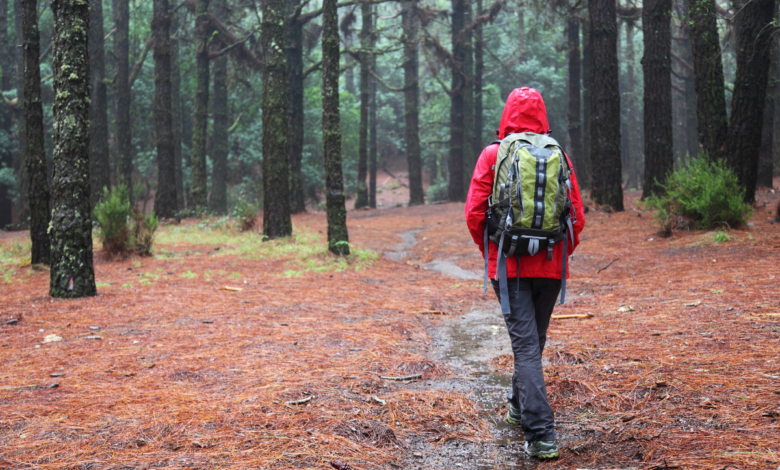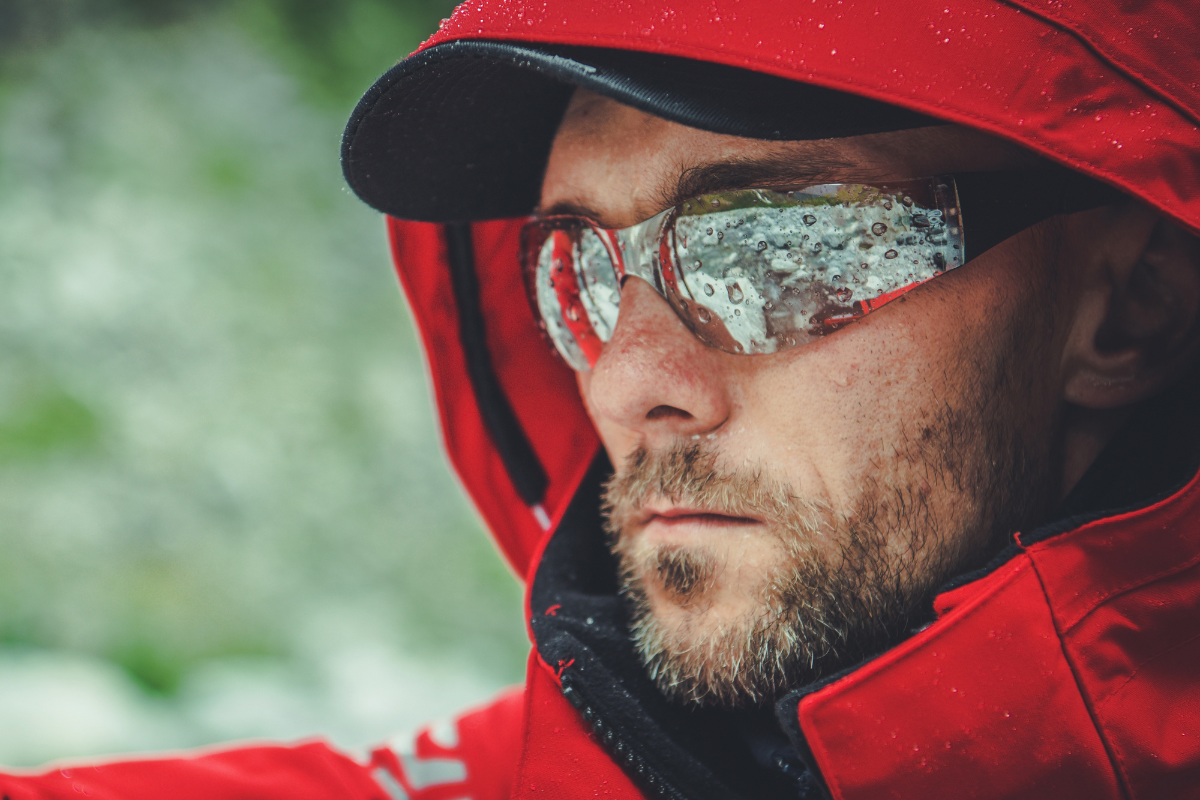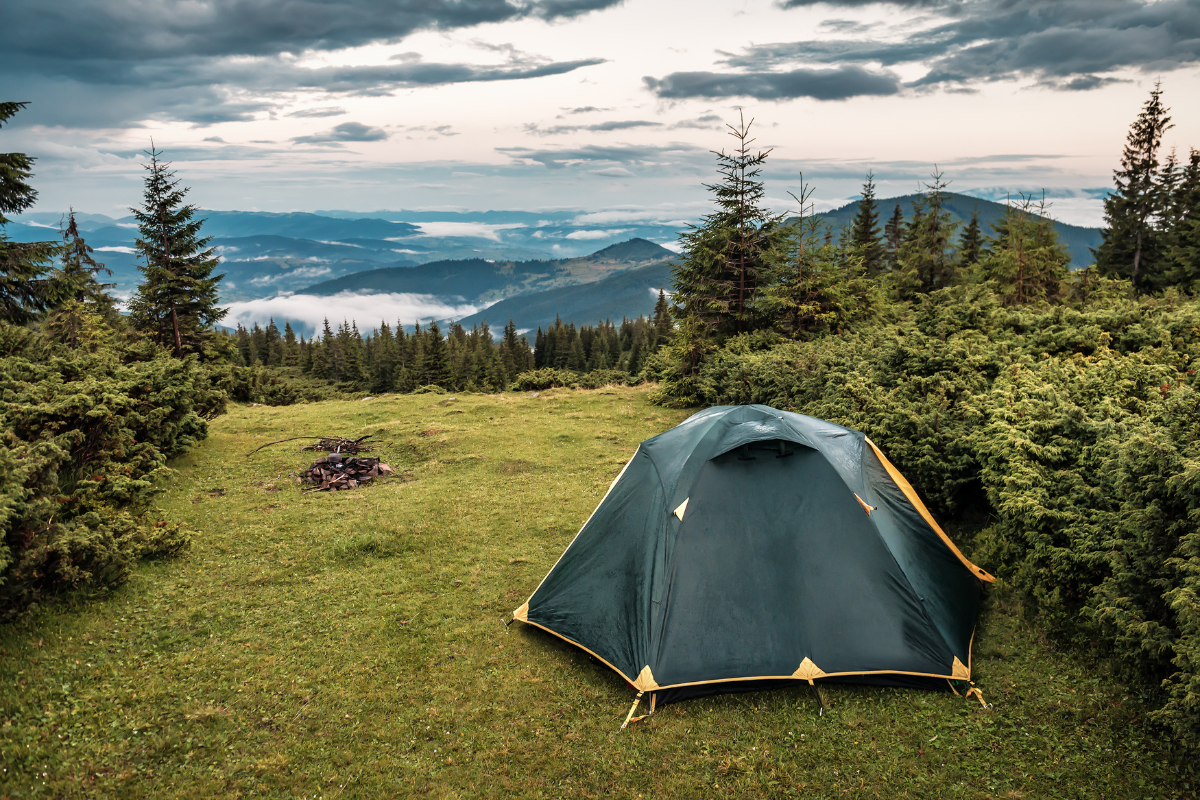8 Essential Hiking in the Rain Tips

When I started hiking, rain was something that I associated with bad weather. But then I realized, it is impossible to get perfect hiking conditions every time I head out. And after a few long hikes in wet conditions, I started enjoying it.
During such hikes, the sights and smells are just otherworldly when compared to other seasons. And some trails are simply magical during the rain. I do not know how, but rain deepens the colors of nature, making them more vibrant. One such destination that I love heading to for rainy day hikes is the Olympic National Park.
That said, getting fully soaked during a hike is a bad idea. So, it is necessary to plan and stay prepared.
These 8 tips for hiking in the rain will help you enjoy rainy day hikes even more.
1. Have a positive attitude
You may have expected bright sunny skies but in the end, you get dark skies, heavy rains, and muddy trails. Tough luck, but grumbling about it will not do you any good. Accept the weather conditions and take the right steps to deal with it.
Staying positive will also help in lifting the group’s morale. Focus on the plus side of things. While being wet and cold sucks, rain can help you connect with nature in an entirely different way. I enjoy photography while on the trail. And some of the best shots I have taken were during rainy conditions.
Besides, with the trails less crowded, you might be able to see wildlife too. And yes, deer do move in the rain.
2. Choose the right trail
If the forecast predicts rain, drop the plan to hike to the top of a peak or a ridge. With the weather being foggy and cloudy, you will not be able to enjoy the best views. Rather, such trails can turn slippery and risky during rain.
Instead, pick trails that move through the forests, overlooking the river. If the trail has a few waterfalls in it, even better. With fog and greenery all around, the beauty of waterfalls amplifies during the rains.
However, prolonged rain can flood rivers, which can be a concern. More on that later.
3. Wear wet-weather clothing
Even when you know what to wear while hiking, staying completely dry is impossible. While walking in a downpour, moisture seeps in through the gaps. Still, waterproof outerwear helps in keeping your inner layers dry. Drying wet clothes is a hassle that I prefer to avoid during a hike.
Waterproof jackets and pants made from nylon or polyester are your best bet. Pair them up with waterproof boots, and a rain cap. If your waterproof clothing is a few years old, consider adding a Durable Water Repellent (DWR) coating to improve performance.
Again, you want your rain gear to be breathable. Getting wet outside and sweaty inside is the worst-case scenario. Packing extra rain gear like gaiters, waterproof gloves, hiking poles, and zip-lock bags is a good idea. Make sure to make some extra dry clothing if you are planning to hike in the rain.
Two other items that I carry during a rainy hike are micro cloth towels and ropes. These towels are great for drying up after a long walk in the rain. The rope can be used as a clothesline to dry out the wet clothes.

4. Avoid stream crossings
I have seen humble streams turn into roaring torrents after overnight rain. With a single misstep, you can get swept away by a roaring river. The most important aspect while hiking is to ensure your safety. Crossing angry streams, especially if you are alone, is not suggested.
If the trail moves across streams, it is best to avoid it and turn back during the rain. Such crossings can only be attempted if you have the right equipment and the necessary experience. If there is no other way, look for a narrow crossing spot where you need not ford the water.
Bonus tip: never camp near an area prone to overnight flooding.
5. Keep an eye out for lightning
Lighting can be dangerous in an open or elevated area. And even if it does not kill you, the injuries can be severe. If you observe clouds building up or hear thunder at a distance come down to a lower elevation and stay away from solitary objects like trees. To stay safe from lightning, Do not cross an open section of the trail when a rainstorm is building up.
Avoid all other open spaces, including lakes and ponds. Keep your distance from metal objects like fences and poles. During lighting, drop the hiking pole or a pack with a metal frame. If there are no permanent shelters nearby, crouch down minimizing your height and your contact with the ground.
6. Protect your gear
While hiking in the rain, I use a pack cover to prevent water from getting into the backpack. They are cheap and offer excellent value. The problem is that they can pulled off by sharp branches or prickly bushes.
The other option is to use a backpack with a waterproof lining. In addition, pack all gear in waterproof bags, Dry boxes or Ziplock bags are good for storing phones and other electronic devices. To keep the wet clothes separate, I use heavy-duty garbage bags.
7. Keep your tent zipped up
Not only do long spells of rain make us uncomfortable in the outdoors, but insects too. So, the chances are, that a few of them will end up seeking shelter in a warm and dry corner of your tent.
And imagine snakes scurrying around tents during a hike in the rain. Trust me, I have seen that happen with tent camping from time to time.
Keeping the tent zipped up is a good idea if you do not want to share space with the creepy crawlies. Check the corners of the tent and below the mattresses at night to make sure that no insects are hiding in those spots.

8. Carry an umbrella
Admittedly, umbrellas are not a common piece of hiking gear. But think about this.
Once you have camped in the rain, you will need to move out of the tent for various reasons. Donning waterproof rain gear each time you head out can be a real pain. This is where the umbrella comes in handy.
Let’s not forget that umbrellas are an extremely effective piece of rain protection gear and are super versatile. While they wil not work for you when the temperatures are low, they are great for hiking during periods of off-and-on rain. Plus, they provide excellent sun protection too.
And you know what- I have even used them as windscreens while lighting a campfire.
FAQs
What is the best wet weather gear for hiking?
The best wet weather gear for hiking is breathable, waterproof clothing and waterproof trail shoes. Besides, you will need to protect your backpack and gear from getting wet by using rain covers and waterproof bags.
What shoes to wear hiking in the rain?
Waterproof hiking boots with a grippy outsole are good for hiking in the rain. You can also use upland hiking boots that have similar properties.
How can I walk in the rain without getting sick?
To prevent getting sick while walking in the rain, you need to stay dry. Wear sufficient warm clothing to prevent your body temperature from getting low. At the same time, make sure that you wear breathable clothing that allows the sweat to evaporate. If your clothes get wet, change into dry clothes at the first chance.
Final Thoughts
There you have it. We have touched on the most important tips for hiking in the rain. No matter the type of hiker you are, these tips will surely help you to weather the rainy weather.
Still, you may be wondering- is it safe to hike in the rain?
The answer is, yes. However, you need to plan wisely and be prepared with the right gear.
If you have never hiked in the rain before, go ahead and try it. You will enjoy new sights and sounds on the trail like never before.


